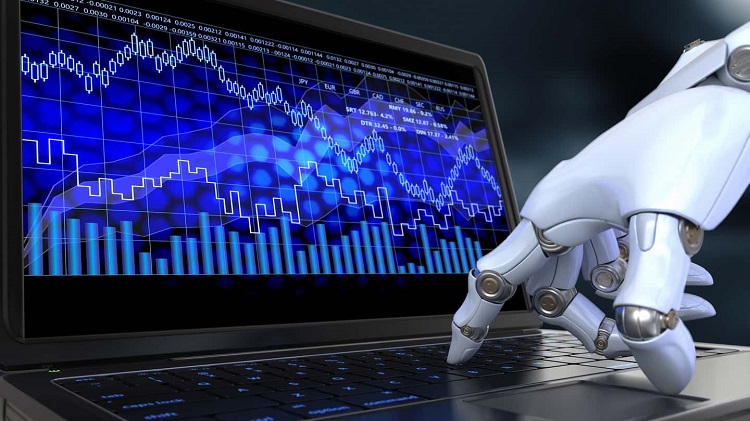In today’s fast-paced financial markets, traditional methods of trading are increasingly being replaced by sophisticated algorithms that execute trades with precision and speed. This shift towards algorithmic trading, also known as algo trading, has revolutionised the way financial assets are bought and sold, offering traders a competitive edge in capturing market opportunities. The definition, development, tactics, and impact of automation on the current finance scene are all covered in this in-depth analysis of algorithmic trading.
Table of Contents
Introduction to Algorithmic Trading
Algorithmic trading refers to the use of computer algorithms to automate the process of buying and selling financial assets in the market. Algorithmic trading, in contrast to conventional manual trading, depends on preset sets of rules and instructions to execute deals quickly and effectively. In traditional manual trading, human traders make judgments based on intuition and analysis.
The concept of algorithmic trading dates back to the 1970s, with the advent of electronic trading platforms and the availability of market data in digital formats. However, it was in the late 1990s and early 2000s that algorithmic trading gained widespread popularity, thanks to advancements in computing technology and the proliferation of high-frequency trading (HFT) firms. Find out more at ADSSecurities.
Understanding Algorithmic Trading
Algorithmic trading systems consist of three main components: data acquisition and preprocessing, strategy development, and execution algorithms. Data acquisition involves collecting market data from various sources, such as stock exchanges and financial news websites, and preprocessing it to remove noise and ensure accuracy. Strategy development entails designing trading strategies based on quantitative analysis techniques and mathematical models, while execution algorithms are responsible for executing trades based on predefined strategies.
The evolution of algorithmic trading can be traced back to the early days of electronic trading when traders began using computers to automate order execution. Algorithmic trading has developed over time from straightforward rule-based methods to sophisticated algorithms that use artificial intelligence and machine learning techniques to analyze market data and make trading choices.
The Role of Automation in Financial Markets
The role of automation in financial markets has evolved significantly over the years, from the manual execution of trades on the trading floor to the electronic trading platforms and algorithmic trading systems used today. With the advent of electronic communication networks (ECNs) and algorithmic trading platforms, the majority of trading activity now takes place electronically, with algorithms executing a significant portion of trades on behalf of institutional investors and proprietary trading firms.
Advancements in computing technology, such as faster processors and improved network infrastructure, have played a crucial role in driving the adoption of algorithmic trading. These technological advancements have enabled algorithms to process vast amounts of market data in real-time and execute trades with millisecond precision, giving algorithmic traders a competitive edge in capturing market opportunities.
Building Blocks of Algorithmic Trading Systems
Data acquisition is the first step in the algorithmic trading process, involving the collection of market data from various sources, such as stock exchanges and financial news websites. Once the data has been collected, it must be preprocessed to remove noise and ensure accuracy, a process that often involves filtering out irrelevant information and normalising the data to a standardised format.
Strategy development is the heart of algorithmic trading, involving the design and implementation of trading strategies based on quantitative analysis techniques and mathematical models. Traders use statistical methods, machine learning algorithms, and other quantitative techniques to identify patterns and trends in market data and develop profitable trading strategies.
Implementing Algorithmic Trading Strategies
There are various software platforms and tools available for algorithmic trading, ranging from proprietary trading platforms offered by brokerage firms to open-source trading libraries and frameworks. These tools provide traders with the necessary infrastructure and tools to develop, backtest, and deploy algorithmic trading strategies.
Backtesting is a crucial step in the algorithmic trading process, involving the simulation of trading strategies using historical market data to assess their performance and profitability. Traders use backtesting to evaluate the effectiveness of their trading strategies, identify potential weaknesses, and optimise their parameters for maximum profitability.
Optimization techniques involve fine-tuning the parameters of trading strategies to potentially maximise their profitability and performance. Traders use optimisation techniques such as parameter tuning and machine learning approaches to identify the optimal combination of parameters that yield the highest returns.
Ethical Considerations and Social Implications
Algorithmic trading has raised concerns about algorithmic bias and fairness, as algorithms can inadvertently perpetuate and amplify biases present in the data used to train them. Traders must be aware of the potential ethical implications of their trading strategies and take steps to mitigate bias and ensure fairness in their trading practices.
The rise of algorithmic trading has raised concerns about market stability and systemic risk, as algorithms can amplify market volatility and trigger widespread market disruptions. Regulators must implement measures to ensure the stability and integrity of financial markets and prevent excessive volatility caused by algorithmic trading.
Conclusion
Algorithmic trading has revolutionised the way financial assets are bought and sold, offering traders a competitive edge in capturing market opportunities. By harnessing the power of automation and data-driven analysis, algorithmic traders can execute trades with precision and speed, minimising slippage and potentially maximising profitability. However, algorithmic trading also poses several risks and challenges that traders must be aware of, including market volatility, regulatory scrutiny, and ethical considerations.

